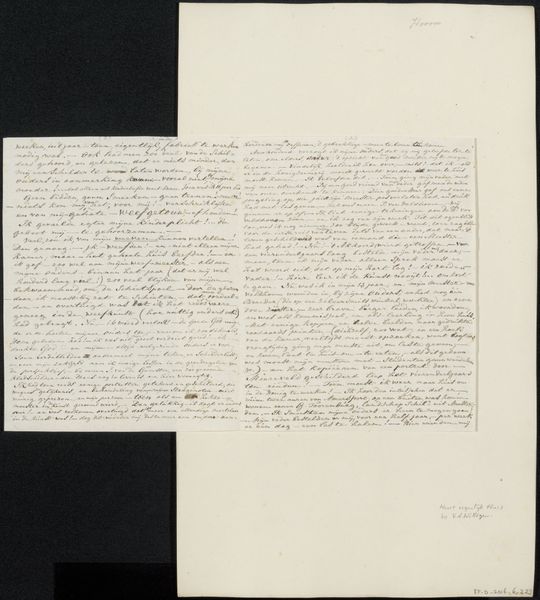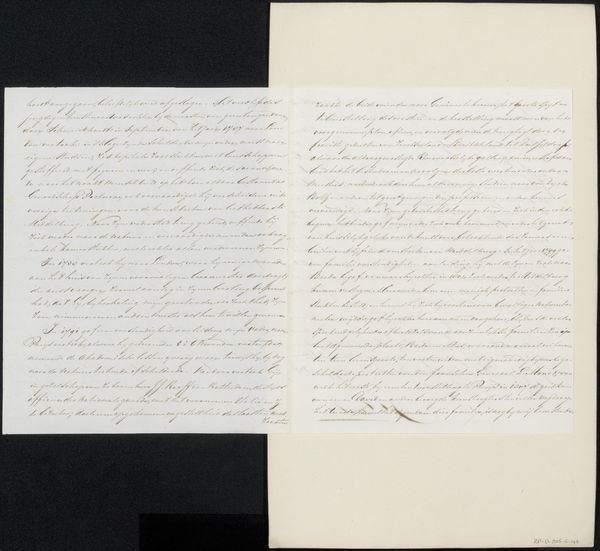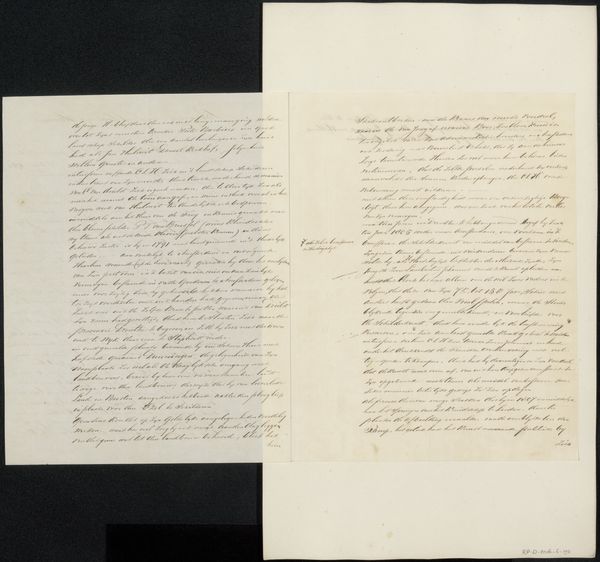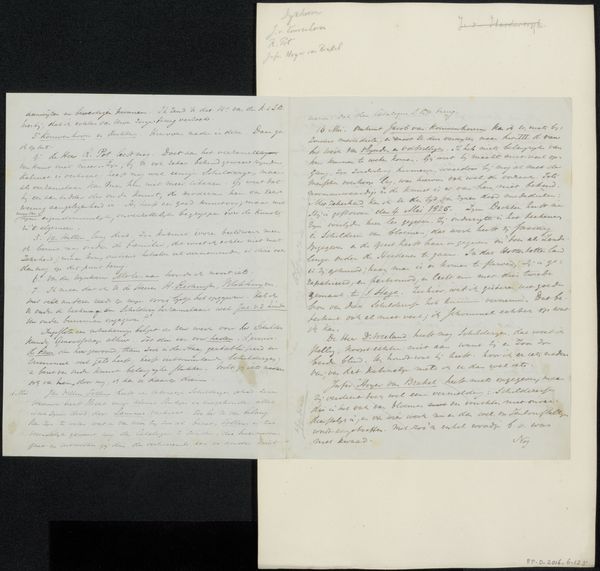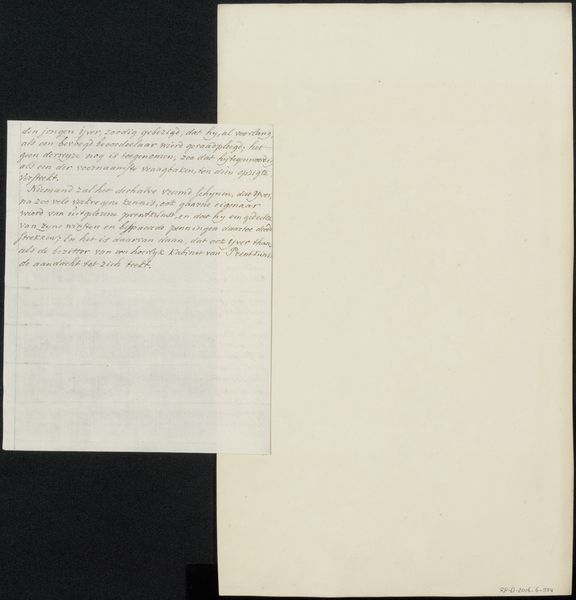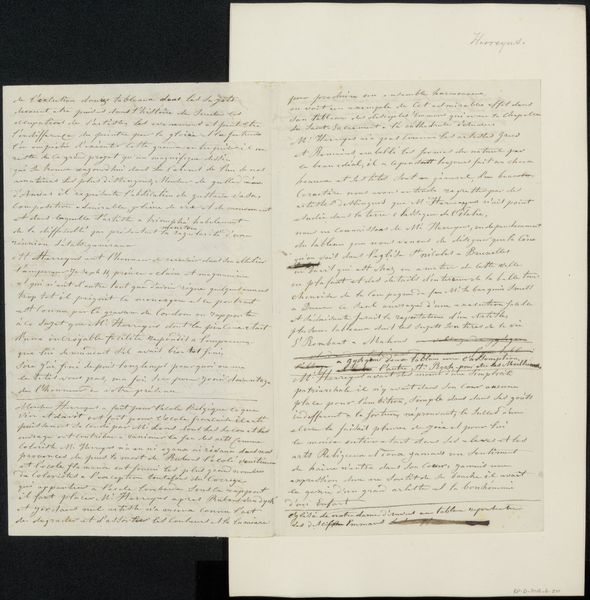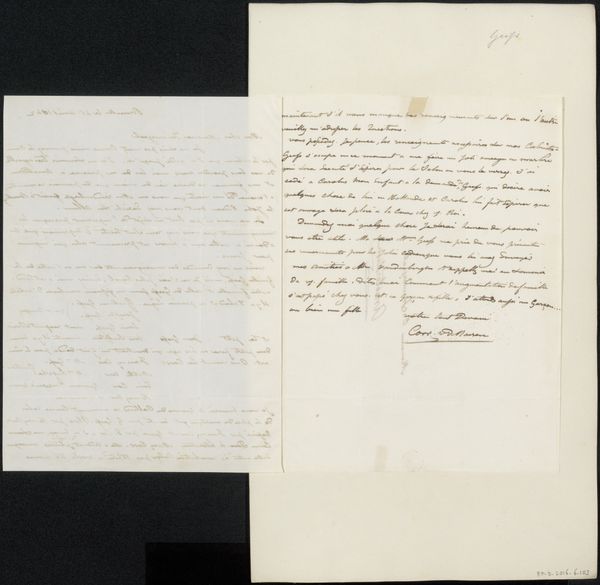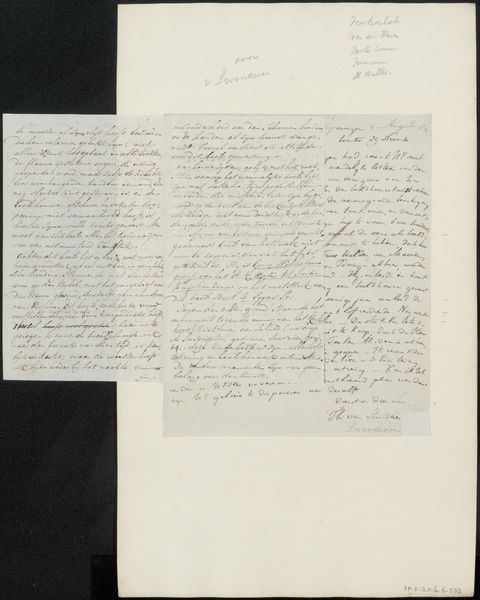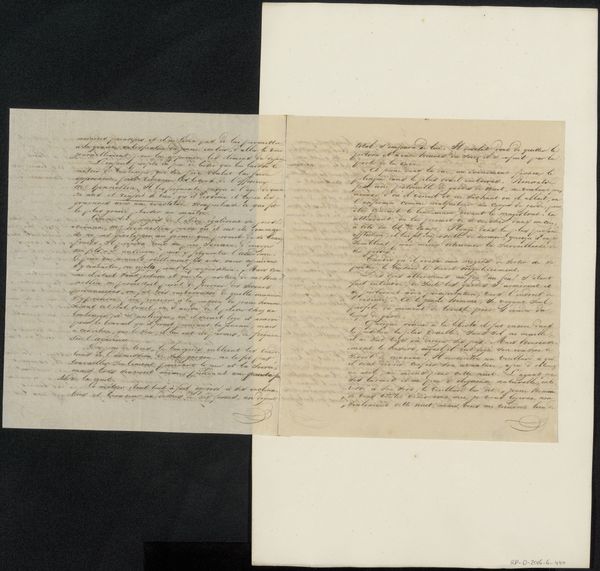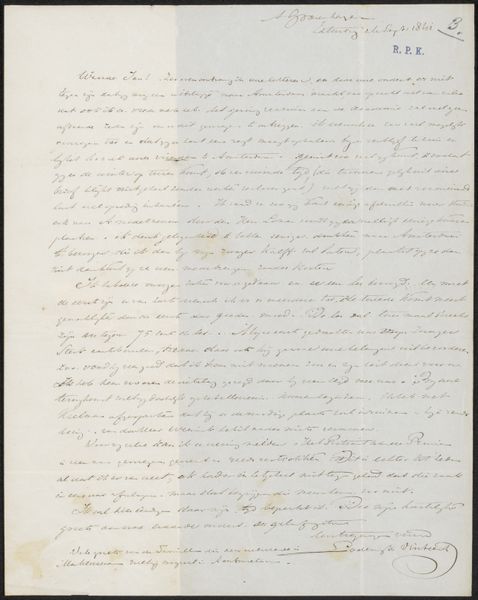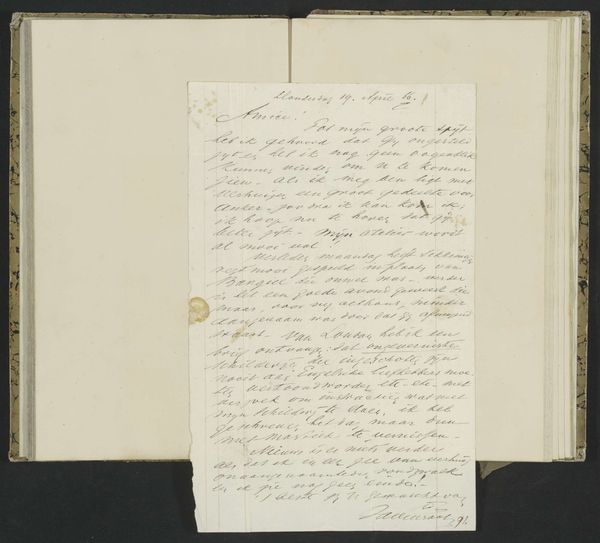
drawing, paper, pen
#
portrait
#
drawing
#
paperlike
#
typeface
#
hand drawn type
#
paper
#
hand-drawn typeface
#
romanticism
#
stylized text
#
thick font
#
pen
#
handwritten font
#
delicate typography
#
thin font
#
thick lined
Copyright: Rijks Museum: Open Domain
Curator: Looking at this drawing, I’m struck by the delicate texture of the paper itself. Editor: I see a plea for connection and, perhaps, help, in this "Brief aan Willem Bartel van der Kooi," likely from 1814 and currently housed at the Rijksmuseum. It's hard not to wonder about the historical circumstances that led to such a heartfelt message. Curator: Absolutely. Crafted using pen and ink, the lines appear so fragile against the backdrop of what looks like relatively cheap paper, doesn’t it? Editor: Exactly, considering that the author of this letter is Johannes Immerzeel, there are layers of socioeconomic realities at play. The fact that Immerzeel chooses the medium of letter-writing indicates an aspiration to engage in a bourgeois practice. He wishes to participate in the dominant social framework of his time, even in distress. Curator: I agree that Immerzeel's choice is deliberate. Look at the carefully drawn typeface! You get a sense of the time and effort put into the work by his hand alone. The thick and thin lines emphasize the materiality of ink on paper, underscoring the act of its production. Editor: And what does it mean that we still engage with such handwritten artifacts today? I think this reflects our contemporary desire for more intimate and personal forms of communication, and more embodied relationships. Curator: The handwriting almost humanizes a person from so long ago...a way to feel more present to a history we were not there for. Editor: Indeed! This piece speaks to the enduring power of art to act as a historical and social conduit, reminding us to ask what the physical act of engaging with materials really means in light of the complex layers of historical realities. Curator: Focusing on the work in terms of its materials and the context surrounding its creation truly enriches one's perception of history itself. Editor: I walk away understanding more profoundly that what appears mundane bears intimate reflections of individuals embedded in their socio-economic and political fabrics.
Comments
No comments
Be the first to comment and join the conversation on the ultimate creative platform.
